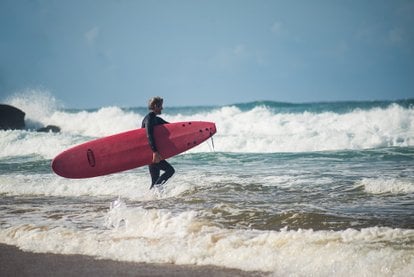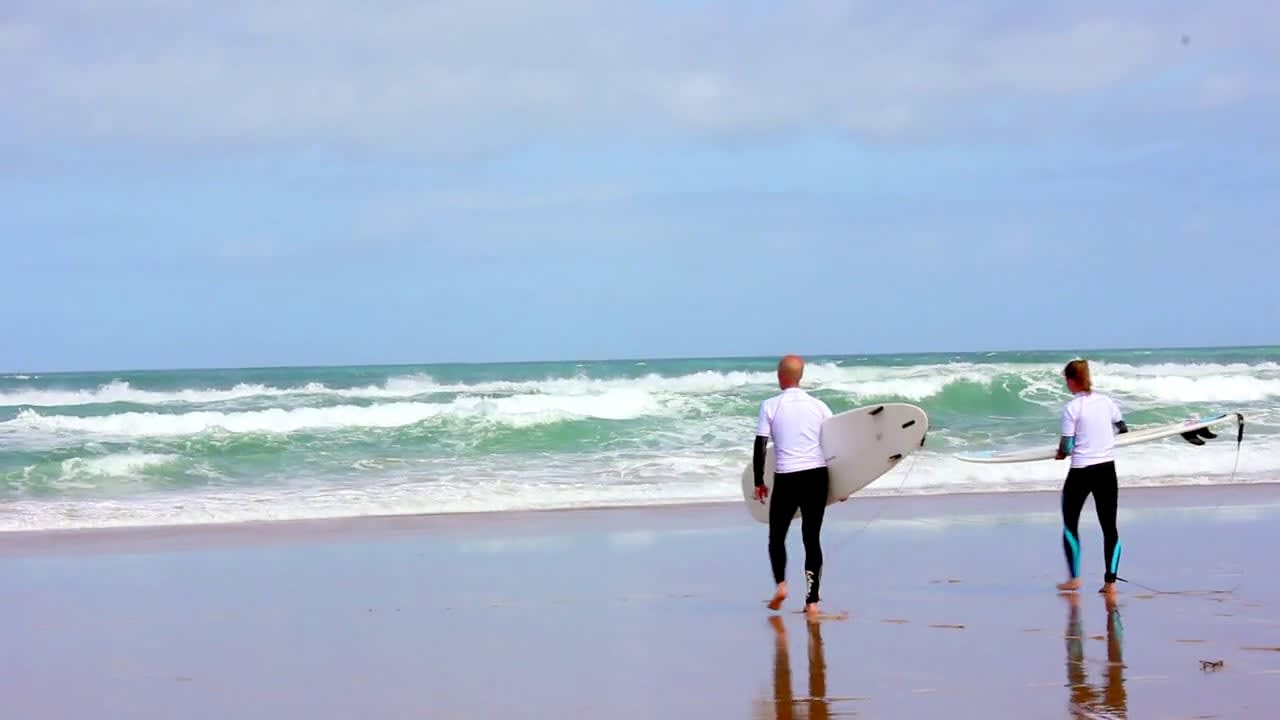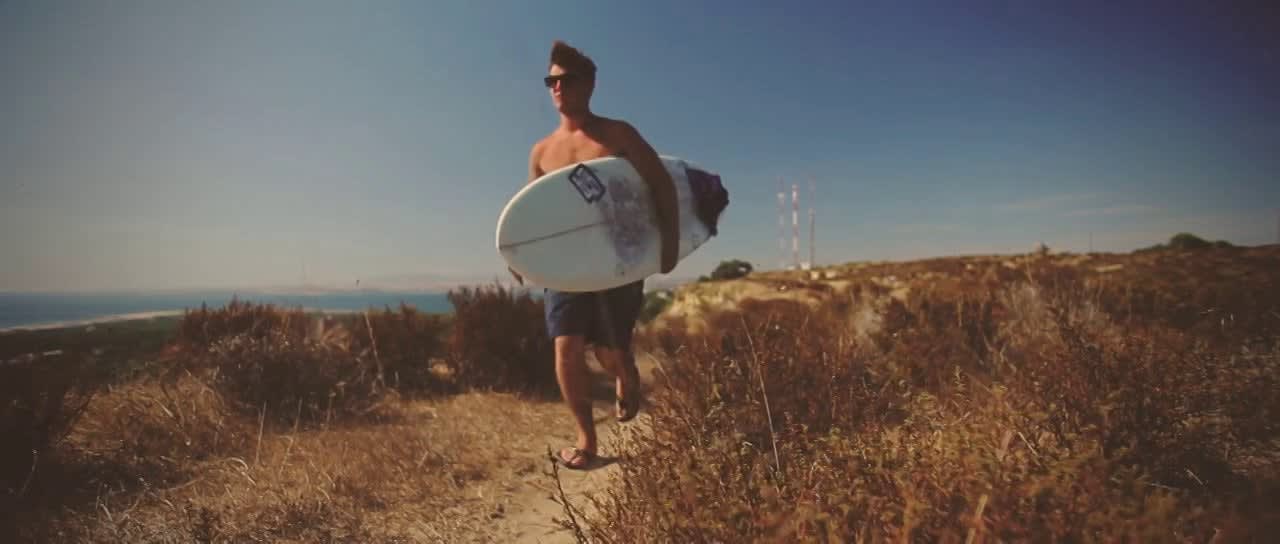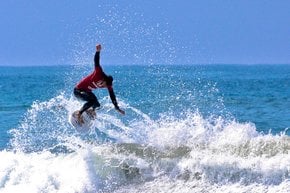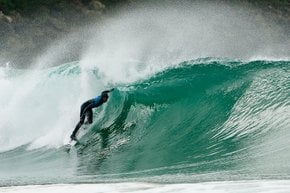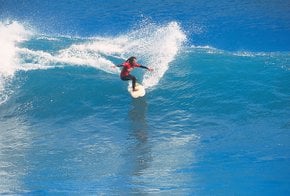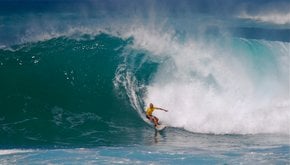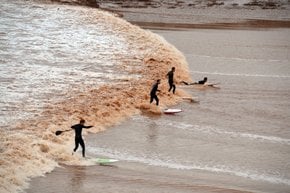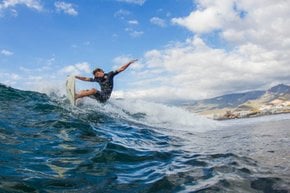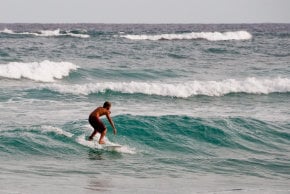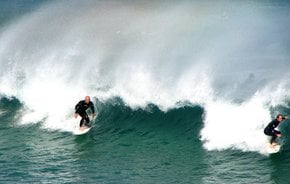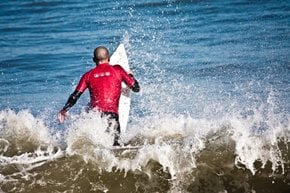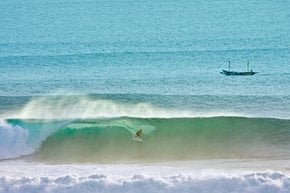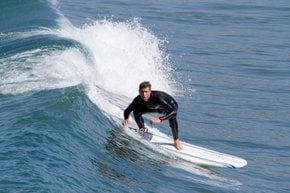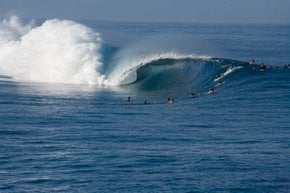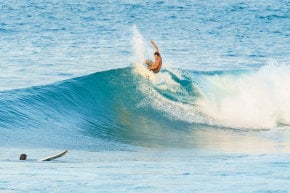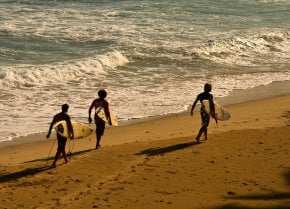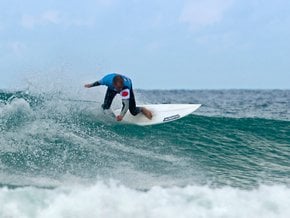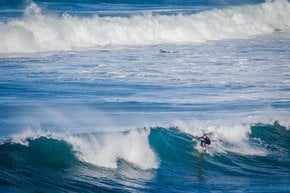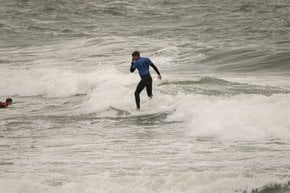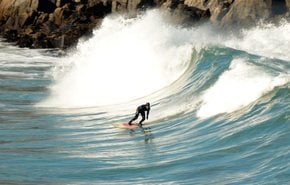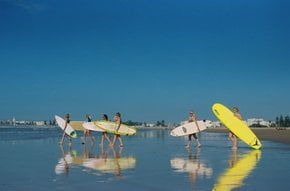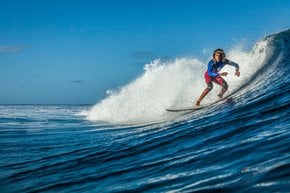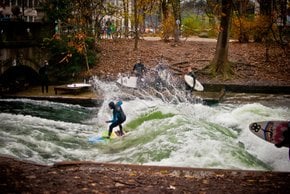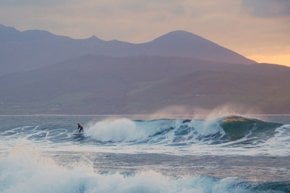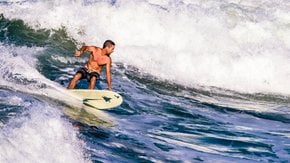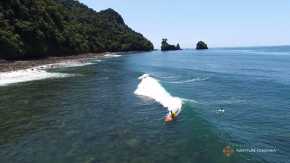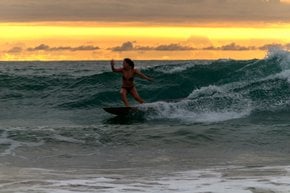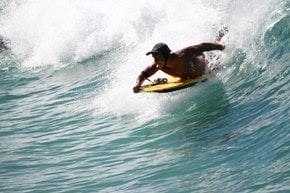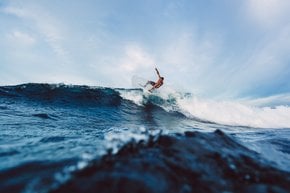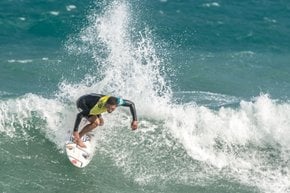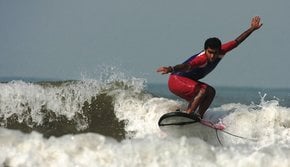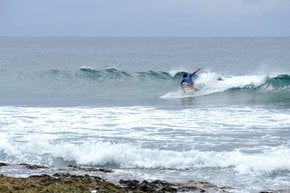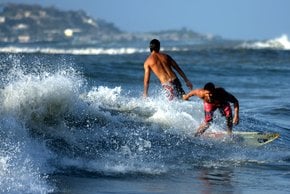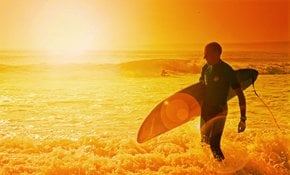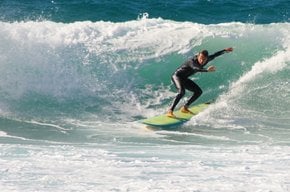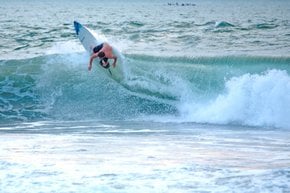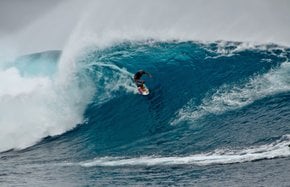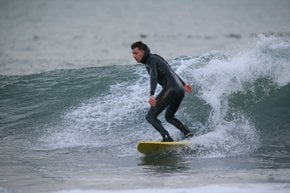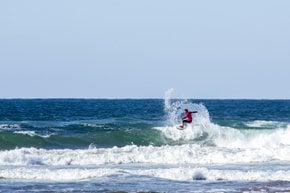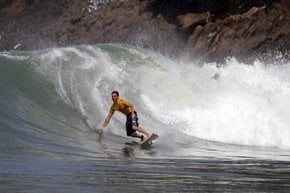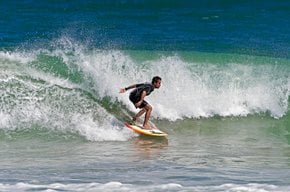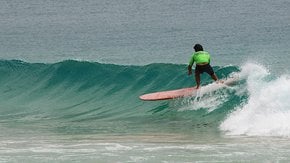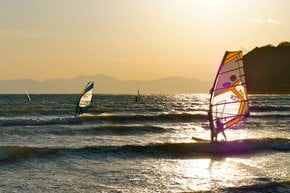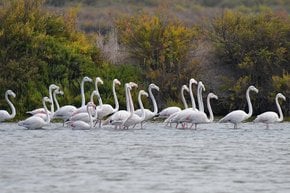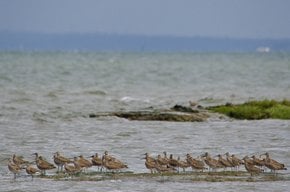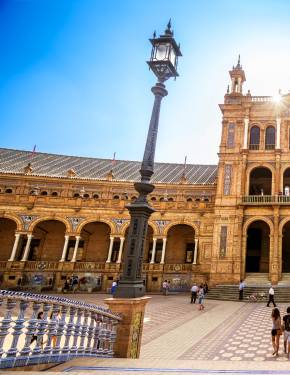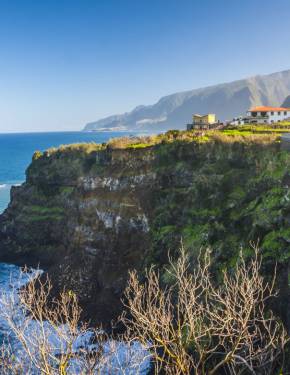Surfing in Lisbon 2025-2026
Surfers enjoy the vast coasts in Lisbon vicinity
Best time: September–May
Lisbon is not the first place that comes to the minds of surfers, but the city can actually offer plenty of surfing spots. As the coastline is pretty long, the beaches rarely get overcrowded, dozens of surfing schools vary in prices and it is possible to find an affordable one. However, the size of the waves highly depends on the season.
For the beginners, it is better to come to Lisbon in the late spring or early summer as the waves are rather small. Even though the temperature of the air might be high—around 30°C – the water remains cold (15°C) and a wetsuit is required.
More experienced surfers would enjoy coming to Lisbon in spring or autumn when the waves get bigger. For those who know the basics of surfing practising in summer would be rather boring. Meanwhile, as winters are mild enough, the most experienced surfers may arrive even in December-February. Due to the large Atlantic storms, the best swells are found along the coast but the water is pretty cold. But generally, the best periods are spring and autumn, when the waves are big enough and it's not too cold outside. Moreover, as the best surfing conditions are outside the summer months, car rental prices are lower so driving to the more remote locations is more affordable.
Lots of surfers’ schools and spots for practising are located west of Lisbon (Cascais and the Estoril coast) and south (Costa da Caparica). They differ in terms of wave types and directions, and the number of surfers. Hence, you should do a bit of research before planning your surfing trip to the Lisbon region.

